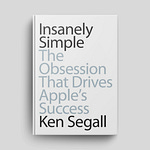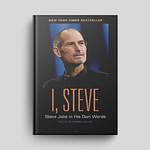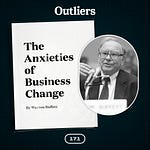Turning the Flywheel is a monograph that was meant to accompany Jim Collins' famous book Good to Great — which is all about what separate good companies from great ones, and how companies can make the journey to greatness. As Jim Collins writes in Turning the Flywheel:
I wrote this monograph to share practical insights about the flywheel principles that became clear in the years after first writing about the flywheel effect in Chapter 8 of Good to Great. I decided to create this monograph because I've witnessed the power of the flywheel, when properly conceived and harnessed, in a wide range of organizations: in public corporations and private companies, in large multinationals and small family businesses, in military organizations and professional sports teams, in school systems and medical centers, in social movements and nonprofits.
Since learning about the concept of the Flywheel, I've since explained it and helped many of the portfolio companies I've invested in — both personally and through my venture fund Ligature — to create and implement their own flywheel.
It's a fantastic way to force deep strategic thinking as it forces you to identify the disciplines, that sit far above any product or month or quarter, that will help you build and sustain momentum. The best flywheels are both timely and timeless, acting as a source of strength in turbulent times and a fantastic guardrail when making strategic decisions.
Flywheels ultimately explain why some companies build momentum and others don't.
Listen & Watch: Listen now on Apple, Spotify, or Google. Watch on YouTube. Or find a link to your favorite player on Pod.link.
The Book in Three Sentences
Turning the Flywheel, which is a monograph Jim Collins wrote to accompany his famous book Good to Great, introduces the concept of the Flywheel. Which serves both as a way to breakdown and analyze any business, as well as a framework to understand why some companies build momentum and others don't. The best flywheels are both timely and timeless, acting as a source of strength in turbulent times and a fantastic guardrail when making strategic decisions.
Introduction by Jim Collins
In the autumn of 2001, just as Good to Great first hit the market, Amazon.com invited me to engage in a spirited dialogue with founder Jeff Bezos and a few members of his executive team. This was right in the middle of the dot-com bust, when some wondered how (or if) Amazon could recover and prevail as a great company. I taught them about "the flywheel effect" that we'd uncovered in our research. In creating a good-to-great transformation, there's no single defining action, no grand program, no single killer innovation, no solitary lucky break, no miracle moment.
Rather it feels like turning a giant, heavy flywheel. Pushing with great effort, you get the flywheel to inch forward. You keep pushing, and with persistent effort, you get the flywheel to inch forward. You keep pushing, and with persistent effort, you get the flywheel to complete one entire turn. You don't stop. You keep pushing. The flywheel moves a bit faster. Two turns… then four… then eight… the flywheel builds momentum… sixteen… thirty-two… moving faster… a thousand… ten thousand… a hundred thousand. Then at some point—breakthrough! The flywheel flies forward with almost unstoppable momentum.
Once you fully grasp how to create flywheel momentum in your particular circumstance (which is the topic of this monograph) and apply that understanding with creativity and discipline, you get the power of strategic compounding. Each turn builds upon previous work as you make a series of good decisions, supremely well executed, that compound one upon another. This is how you build greatness.
Steps to Capturing Your Flywheel
So, then, how might you go about capturing your own flywheel? At our management lab, we’ve developed a basic process, refined during Socratic-dialogue sessions with a wide range of organizations. Here are the essential steps:
Create a list of significant replicable successes your enterprise has achieved. This should include new initiatives and offerings that have far exceeded expectations.
Compile a list of failures and disappointments. This should include new initiatives and offerings by your enterprise that have failed outright or fell far below expectations.
Compare the successes to the disappointments and ask, “What do these successes and disappointments tell us about the possible components of our flywheel?”
Using the components you’ve identified (keeping it to four to six), sketch the flywheel. Where does the flywheel start—what’s the top of the loop? What follows next? And next after that? You should be able to explain why each component follows from the prior component. Outline the path back to the top of the loop. You should be able to explain how this loop cycles back upon itself to accelerate momentum.
If you have more than six components, you’re making it too complicated; consolidate and simplify to capture the essence of the flywheel.
Test the flywheel against your list of successes and disappointments. Does your empirical experience validate it? Tweak the diagram until you can explain your biggest replicable successes as outcomes arising directly from the flywheel, and your biggest disappointments as failures to execute or adhere to the flywheel.
Test the flywheel against the three circles of your Hedgehog Concept. A Hedgehog Concept is a simple, crystalline concept that flows from deeply understanding the intersection of the following three circles: (1) what you’re deeply passionate about, (2) what you can be the best in the world at, and (3) what drives your economic or resource engine. Does the flywheel fit with what you’re deeply passionate about—especially the guiding core purpose and enduring core values of the enterprise? Does the flywheel build upon what you can be the best in the world at? Does the flywheel help fuel your economic or resource engine?
Tips and Tactics for Building Your Flywheel
Never underestimate the power of a great flywheel, especially when it builds compounding momentum over a very long time. Once you get your flywheel right, you want to renew and extend that flywheel for years to decades — decision upon decision, action upon action, turn by turn — each loop adding to the cumulative effect. But to best accomplish this, you need to understand how your specific flywheel turns. Your flywheel will almost certainly not be identical to Amazon’s, but it should be just as clear and it’s logic equally sound.
Listen to this episode with a 7-day free trial
Subscribe to Outliers with Daniel Scrivner to listen to this post and get 7 days of free access to the full post archives.












